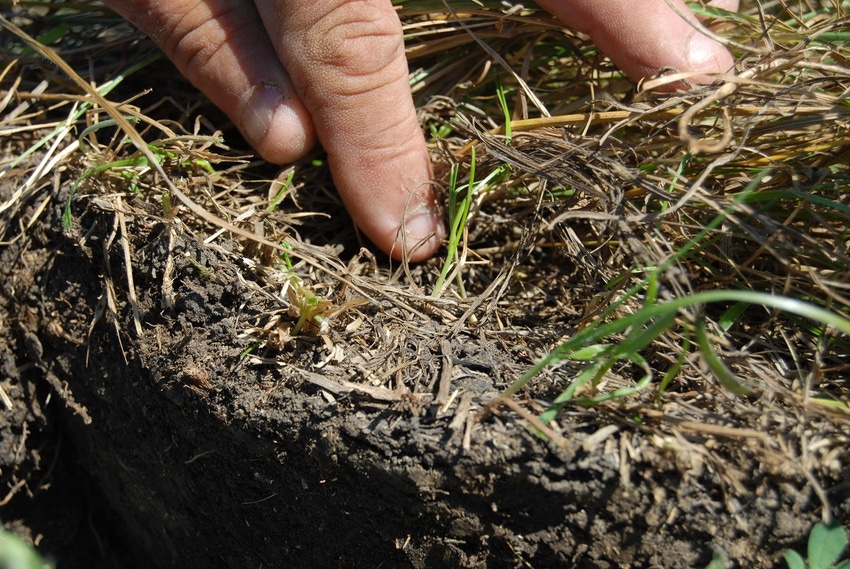
I spent close to 50% of my adult life on the wrong agriculture boat.
There were a number of reasons for this being the case. The number one reason likely was World War II or maybe Harry Truman. When Truman assumed the presidency in March 1945 he had never heard of the Manhattan Project.
Four and a half months later the two big caps popped and the Japanese warlords decided to throw in the towel. They hollered “calf rope” and our government and much of the technical world went to peddling acidified nitrogen, phosphorus and potash (NP&K) from ammunitions production into agriculture in a big way.
Hybrid corn would out-produce open-pollinated varieties with chemical fertilization plus water. Everyone seemed to forget about organic matter and soil health. The new fertilizer was cheap, fuel was cheap, equipment was affordable, and water could be found in underground aquifers and pumped.
Grasses were introduced that loved the same program. Anything that was considered a pest could be killed. By the mid-1950s, much of the country was green year 'round with K-31 tall fescue. In our area if you owned three M-Farmalls you were digging with a big auger. We burnt the remaining soil humus into ashes with high amounts of chemical fertilizer. Dirt became the substance to hold up plants while we fed them purchased materials to make them grow and produce huge crops. Quality was based on looks and not on taste or health. Silos and concrete and feeding replaced pastures and grazing. Balancing rations with two or three feedstuffs and leftovers replaced husbandry and plant diversity.
Back in the 1920s and 1930s, the natural model had received a bunch of good attention and even some nursing care. “A Plowman’s Folly” sold something like 6 million copies 1944-1946.
But lots of agriculture started downward shortly thereafter. We were told to tear out the fences and the “green revolution” was in high gear.
Cattle, hogs and poultry were congregated. Science, medicine, vaccines and supplements would fix everything. Food got cheap -- real cheap. New diseases kept everybody busy, and profits headed south while agriculturalists moved to town to escape poverty.
Presently there are not enough farmers/ranchers left to elect a dog catcher. There are more agricultural university extension, state and federal farm related employees, and sales staff support personnel than farmers. Land grant universities and insurance companies are the major agricultural power forces in every state.
The word “sustainable” has been popularized and purchased by universities and input companies. The farm press has followed suit and the poor word no longer has a true definition. Purchased statistics are rampant.
Recently a U.C. Davis professor described his five pillars of sustainability as:
Animal welfare
Environmental quality
Worker health
Food safety
Economic viabilityHundreds of us now have joined the natural model. I am speaking of real, live producers; not a bunch of tree huggers. We are utilizing good husbandry, good land management and good science. Remember that good science confirms and proves good husbandry.Nowhere is there more evidence of purchased statistics than in the professions of "environmental quality." The truth is that animal offal in the pasture is a necessity for quality plant growth and soil health. There are no odors in our pastures. There are no breaks in the lagoons. There is no toxic waste.Since WW2 the US has watched the death of most every rural community that was not state supported with a college or university.The truth is that all of us have to make decisions concerning who and what we decide to believe. History and experience have proven that given enough money there are folks out there who can justify almost everything and anything they are hired to prove. With regard to sustainability they have just changed the definition.
Yet economic viability comes from lots of small businesses and lots of farms/ranches that are serving each other on a local basis. Haven’t we about proven and debunked this world economy idea?
Worker safety issues are big, real big. The majority of people throughout the world want to feed themselves. Vegetable gardens of extremely small size can feed a family. Add a few local fruit trees and local meat and milk, and you eliminate most food safety issues and huge amounts of fossil fuel. Most everyone now has hot water, stainless steel and refrigerators. This really is not rocket science. Most of the world does not need or want the US to feed them.
Animal welfare will never be completely adequate in large confinement operations. Industrial animals are short lived. Health expenditures are high and the band-aids frequently fall off. High temperature, high moisture and severe cold fronts kill thousands of animals on a fairly regular basis. The majority of the affected animals are in confinement. Uncontrolled stress kills or lowers quality.
I would have liked to jump on board in agreement. For better than two decades I was on their ship but it became evident to me 20 years ago that the industrial ship will sink. The inability to look at wholes will kill the system.
About the Author(s)
You May Also Like






